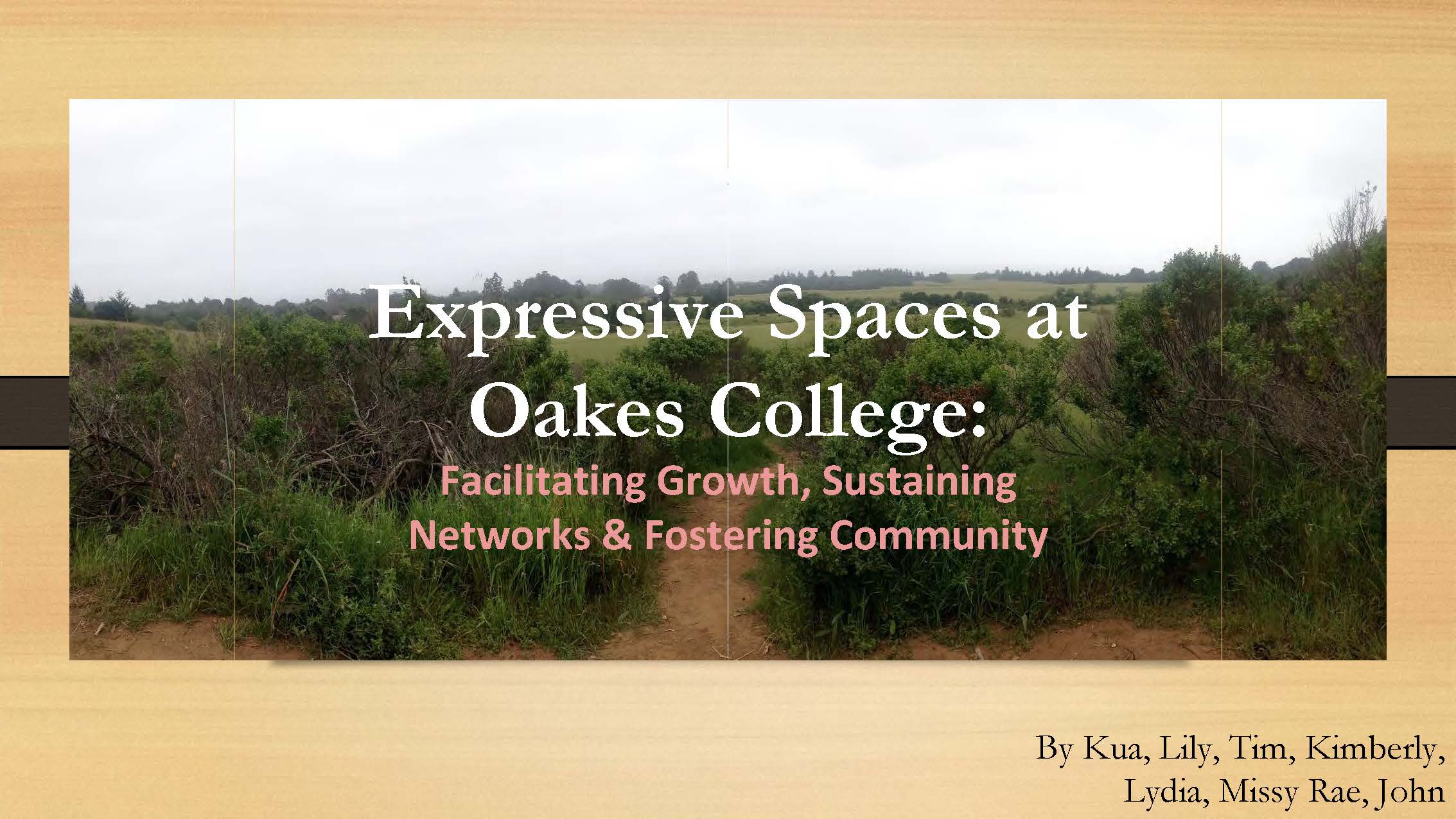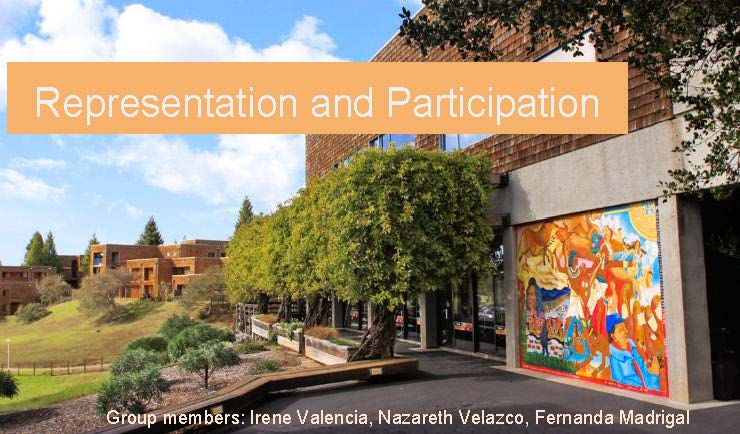Home » Community Mapping Student Work Archive
Community Mapping: Power & the People of Oakes People–Presentations
Below are some final project presentations by research groups in OAKS 153, “Community Mapping.” Each year, the course partners with one or more organizations that help define a social problem relevant to Oakes students and the mission of Oakes College. Students in the course use various social research methods to gather community perspectives to “map” assets and barriers to positive change, to help advance insights and actions steps for the community (See also: Community Mapping; We Belong)
When the course launched in 2015, as “Community Mapping: Power and the People of Oakes College,” the course-project was new and our geography (or transect) was small. The proposal was to discover more about how students, staff, and faculty identified sources of strength and barriers to their goals–and thus to serve as a more deeply reflective and inclusive space for defining future development projects within the Oakes community. The course gradually spiraled outward in scope, each year building on findings and issues identified by previous students.
2015 Project: Oakes College Development
The research proposal for 153’s first year was informed and inspired by the community knowledge gathered and student-research response to 2013 and 2014 Oakes Oral History Project, “Building the Strength to Love and Dream.” Research cohorts in those years were impressed and deeply surprised to learn about their college’s founding, and wanted to know more.
Research was open and inductive: groups reached out to discover what Oakes students and staff identified as assets and barriers to community power. Each of them, focused on different critical aspects of college life Oakes students and staff identified as important:
- tangible needs for academic and economic survival;
- cultural programming and environment at Oakes;
- connections with networks and life outside of Oakes.
In their presentations to Oakes Staff, groups revealed similar findings: Oakes was “the best place on campus” in micro locations of “community cultural wealth” (Yosso 2006), but many students were falling through the cracks in systemic disconnects and disorientation among first-generation students. They recommended some practical priorities, including computer upgrades, better signage and navigation handouts; and a re-investment in Oakes history and the Oakes mural legacy.
2016 Project: Oakes College Development, Continued
Findings from 2015 led to a new round of questions from Oakes staff, and more specific action projects.
Mending the Broken Circuits (2016)
In Mending the Broken Circuits, a research group worked with Oakes Advising on a survey and follow-up to discover the best way to communicate with Oakes students.
One result of this was the Oakes College Newsletter, inaugurated the following year–now a staple of college circuits.
2017 Project: Oakes CARA Program Development
This year marked a shift in scope of inquiry to organizations outside of Oakes on campus and off. Building on 2015 findings about Oakes student’s sense of separation from the city, and 2016 findings about a need for college-based engagement, projects focused student proposals to sound out other Oakes students’ interest and pathways for future projects to “build bridges.” Three sample projects were:
- Research status and interest in reopening Oakes Student Garden; research potential of connections to CASFS, college & community gardens
- Research options for Youth Mentoring; community need, student interest, campus connections
- Research current meanings and movements around “Sanctuary” at Oakes and off-campus
2018 Project: Student Housing Activist Power Analysis
In response to student activism and research in the No Place Like Home Project, 153 partnered with student organizations (Student Union Housing Working Group, and Students United with Renters) that wanted to better understand patterns of strength and barriers in current approaches to organizing.
The four projects focused primarily on “social mapping” and “power-mapping,” analyzing relationships, ideologies, decision-making, and associations on campus and off. The results of the research were useful to the organizations and the researchers, but due to vulnerabilities inherent in the structures of power, could not be shared publicly. This led us to the next phase of development.

2019- Present: The We Belong Project
Currently, we are partnered with the We Belong Collaborative for Community-Engaged Research and Immigrant Justice. In Winter Quarter 2019 and 2020, students in Oakes 153 developed research instruments, conducted and transcribed interviews, facilitated focus groups, and analyzed findings to contribute to a more accurate and productive understanding of immigrants’ experience in Santa Cruz County.
Campus partners include the CISER Project and the Everett Program in the Sociology Department; off-campus partners span the county. (Read more about We Belong)

Contact us: Leslie Lopez, lesliel@ucsc.edu








